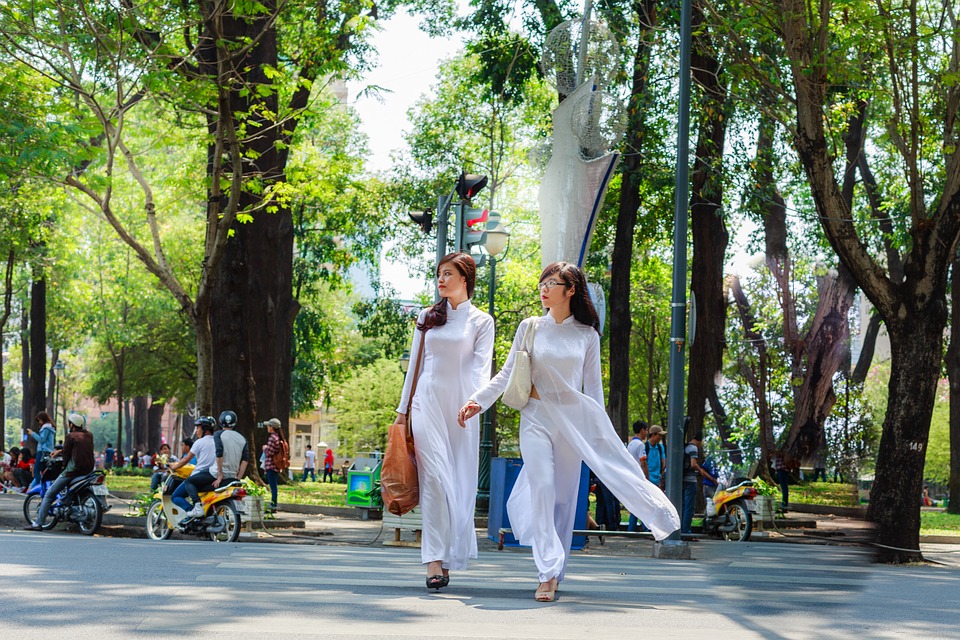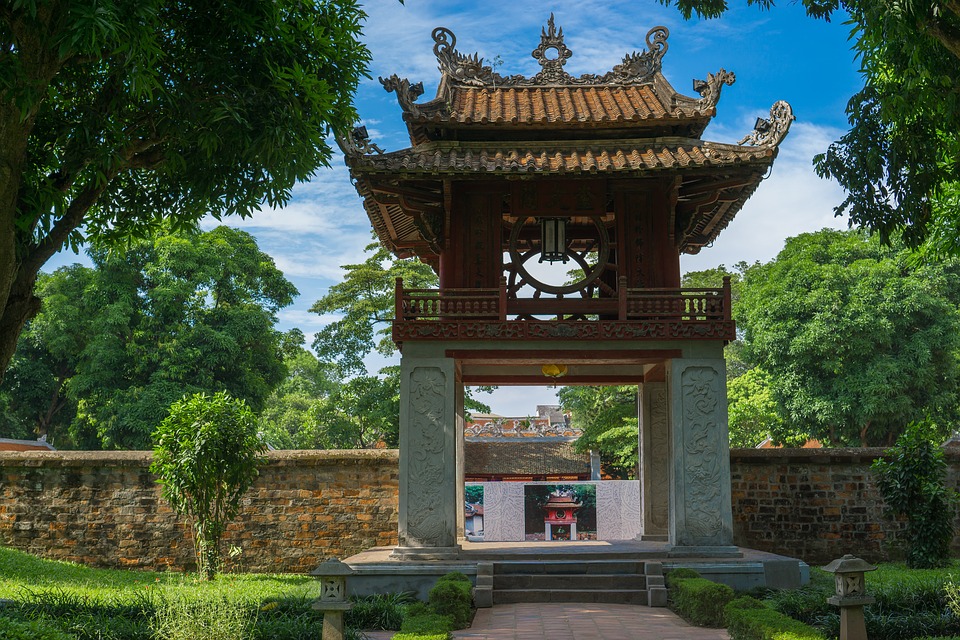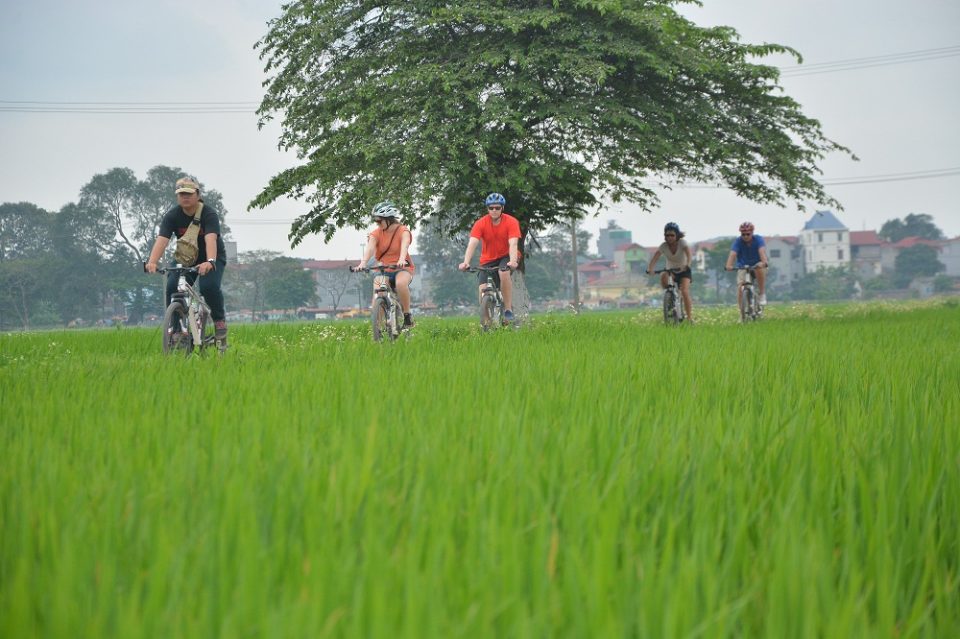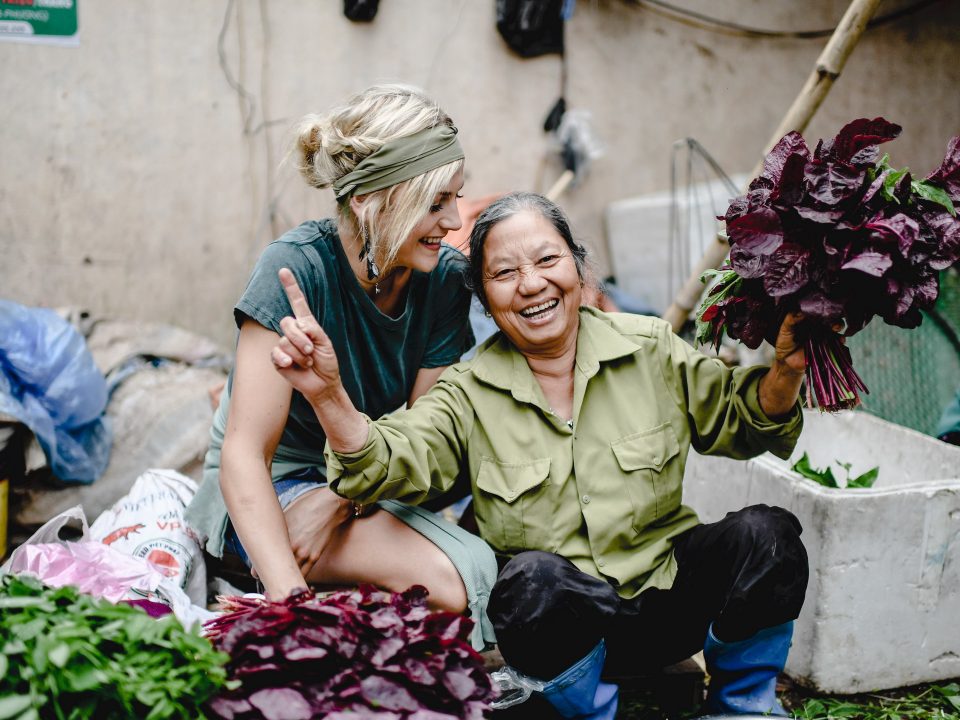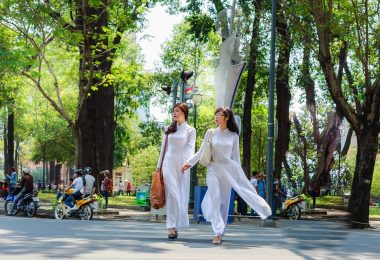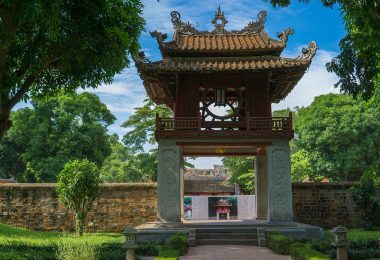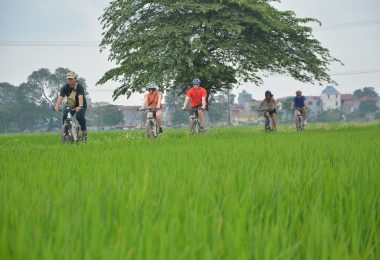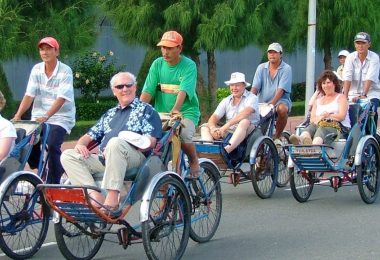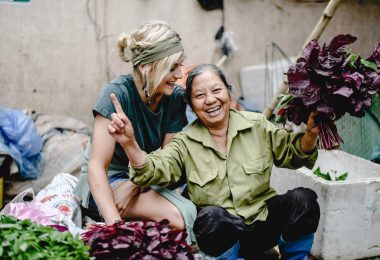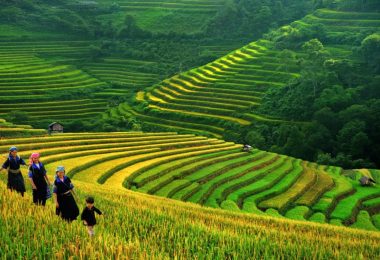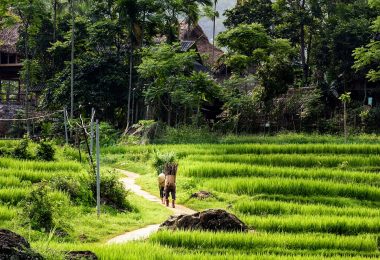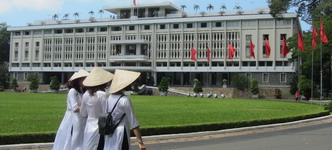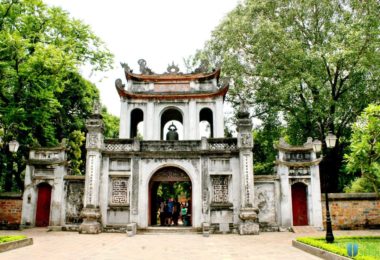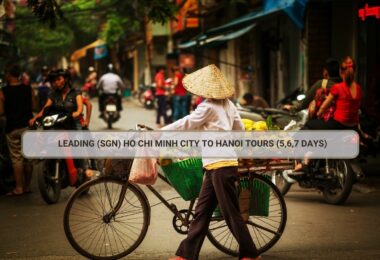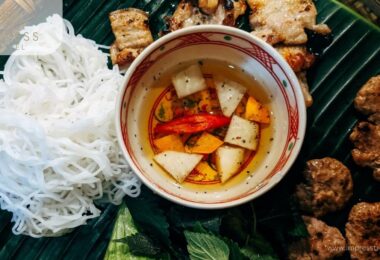Nestled in the heart of Vietnam, Hanoi beckons travelers with its rich history, vibrant culture, and, of course, its delectable cuisine. Among the myriad of dishes that tantalize the taste buds, one stands out as a quintessential Hanoian experience – bún chả. Join us on a culinary journey through the bustling streets of Hanoi as we explore the origins, flavors, and cultural significance of this iconic dish.
History and Origin
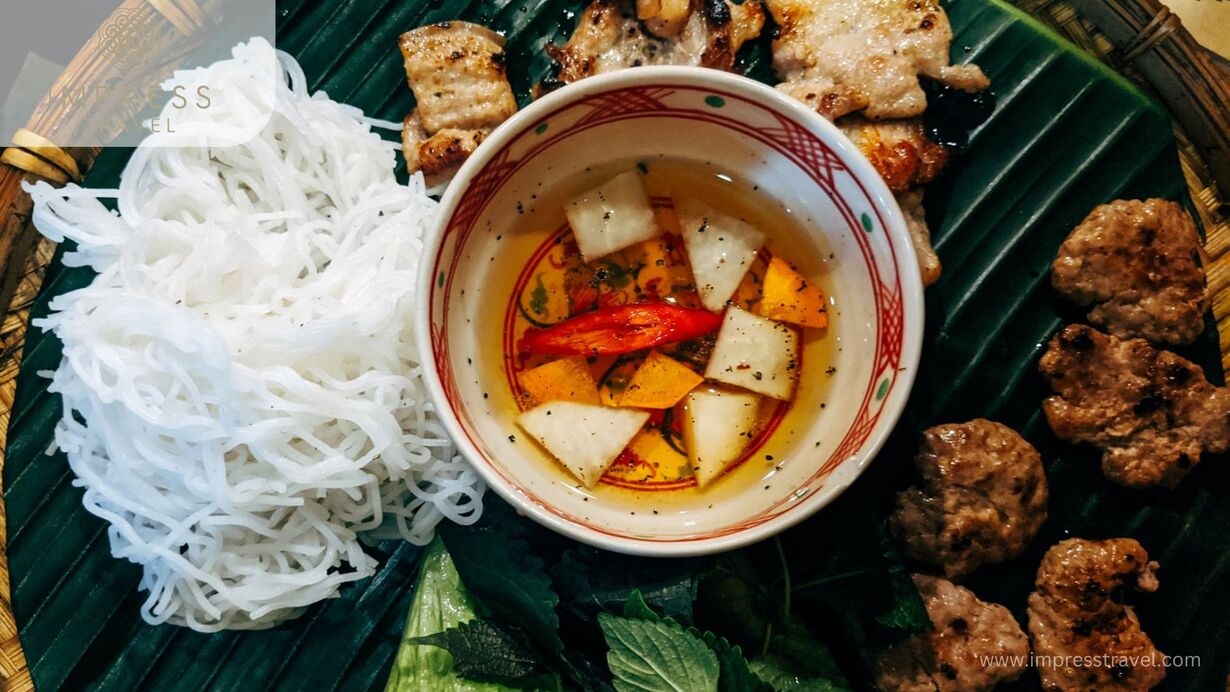
Bun cha
The origins of bún chả can be traced back to Hanoi, the capital city of Vietnam. While the exact timeline of its invention is unclear, it is believed that bún chả has been enjoyed by locals for centuries. It gained widespread popularity in the early 20th century as a street food, sold by vendors who grilled the pork over charcoal fires, infusing it with a smoky flavor that is characteristic of the dish. Some culinary historians believe that bún chả has existed in some form since the 19th century, evolving alongside Hanoi’s bustling street food culture.
Story and Cultural Significance
Bún chả is more than just a dish; it is a cultural experience that embodies the vibrant street food culture of Hanoi. Traditionally, it was a popular lunch option for workers and students who needed a quick, satisfying meal. The communal aspect of dining is also central to the bún chả experience, with families and friends gathering around low tables on small plastic stools to enjoy the meal together.
Course and Type
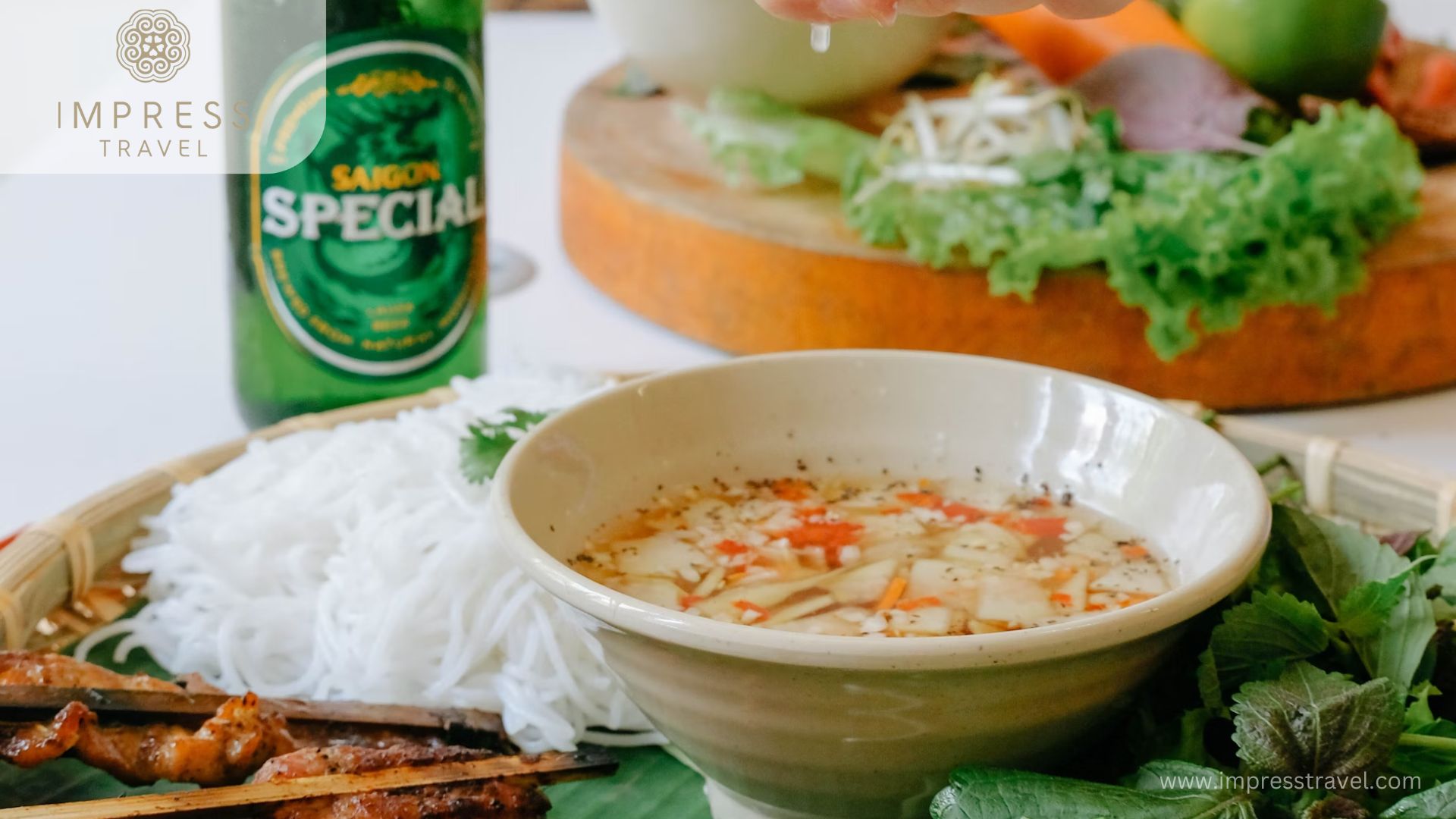
Bun cha sauce
Bún chả is typically served as a main course, though it can also be enjoyed as a substantial lunch. It is classified as a noodle dish, with the star components being the grilled pork (chả) and the vermicelli noodles (bún). The dish is known for its balance of flavors and textures, combining savory, sweet, sour, and spicy elements with tender meat and fresh, crunchy vegetables.
Ingredients
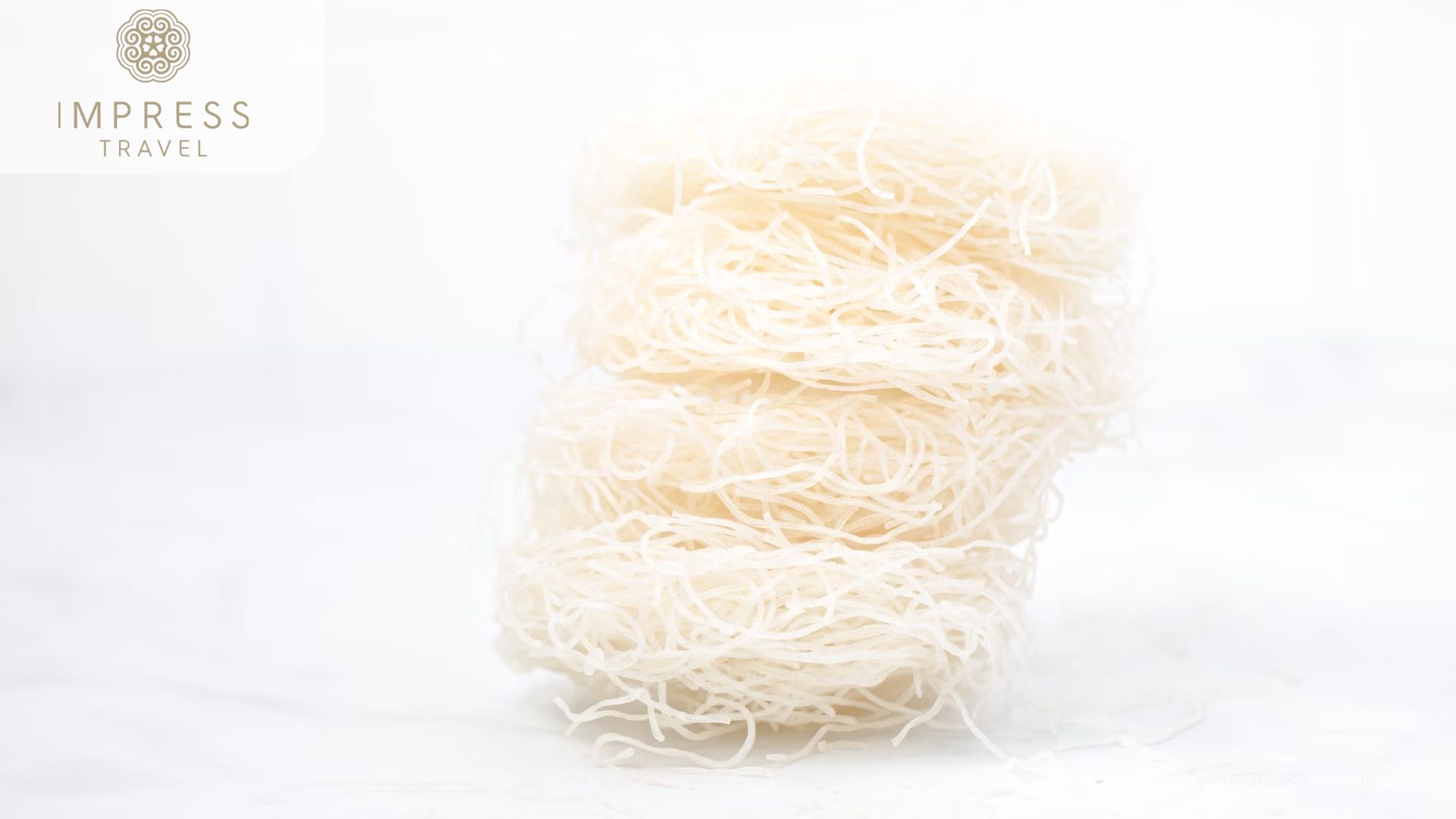
Rice noodles
The key ingredients of bún chả include:
- Pork: Traditionally, the dish uses two types of pork – minced pork formed into patties and thinly sliced pork belly.
- Vermicelli noodles: Soft, thin rice noodles that form the base of the dish.
- Fresh herbs: A variety of herbs such as cilantro, mint, perilla leaves, and lettuce add freshness and complexity to the dish.
- Pickled vegetables: Thinly sliced green papaya or carrot, pickled in a sweet and sour brine.
- Dipping sauce: A combination of fish sauce, vinegar, sugar, garlic, chili, and lime juice, often garnished with sliced chili and garlic.
Detailed Cooking Instructions for Bún Chả
To truly appreciate bún chả, it is helpful to delve deeper into the cooking process, which involves several steps to ensure the perfect balance of flavors and textures.
Preparing the Pork
Minced Pork Patties (Chả Viên):
- Ingredients: 500 grams minced pork, 2 cloves garlic (finely chopped), 1 shallot (finely chopped), 1 tablespoon fish sauce, 1 teaspoon sugar, 1/2 teaspoon black pepper.
- Instructions: In a mixing bowl, combine all the ingredients. Mix thoroughly to ensure the flavors are evenly distributed. Form the mixture into small, flat patties, about the size of your palm.
Sliced Pork Belly (Chả Miếng):
- Ingredients: 500 grams pork belly (thinly sliced), 2 cloves garlic (finely chopped), 1 shallot (finely chopped), 1 tablespoon fish sauce, 1 teaspoon sugar, 1/2 teaspoon black pepper.
- Instructions: In another bowl, combine the sliced pork belly with garlic, shallots, fish sauce, sugar, and black pepper. Mix well and let marinate for at least 30 minutes to allow the flavors to penetrate the meat.
Grilling the Pork
Charcoal Grilling: The traditional method involves grilling over a charcoal fire, which imparts a smoky flavor that is essential to the dish. If you do not have access to a charcoal grill, a gas grill or a grill pan can be used as an alternative.
- Preheat the grill to medium-high heat.
- Place the pork patties and slices on the grill. Cook the patties for about 5-7 minutes on each side, until they are golden brown and cooked through. The pork belly slices should be grilled for about 3-4 minutes on each side, until they are slightly charred and crispy.
Making the Dipping Sauce (Nước Chấm)
- Ingredients: 4 tablespoons fish sauce, 4 tablespoons water, 2 tablespoons rice vinegar, 2 tablespoons sugar, 2 cloves garlic (minced), 1 red chili (sliced), juice of 1 lime.
- Instructions: In a bowl, combine fish sauce, water, rice vinegar, and sugar. Stir until the sugar is completely dissolved. Add minced garlic, sliced chili, and lime juice. Taste and adjust the seasoning, balancing the sweet, sour, and salty flavors to your preference.
Preparing the Vermicelli and Vegetables
Vermicelli Noodles (Bún):
- Boil a pot of water and cook the vermicelli noodles according to the package instructions, usually about 3-5 minutes. Drain the noodles and rinse them under cold water to stop the cooking process and prevent sticking. Set aside.
Fresh Herbs and Lettuce:
- Wash and dry a variety of fresh herbs such as cilantro, mint, perilla leaves, and lettuce. Tear the larger leaves into bite-sized pieces if necessary.
Pickled Vegetables (Đồ Chua):
- Ingredients: 1 green papaya or carrot (julienned), 2 tablespoons rice vinegar, 1 tablespoon sugar, 1/2 teaspoon salt.
- Instructions: In a bowl, combine rice vinegar, sugar, and salt. Add the julienned papaya or carrot and let it sit for at least 15 minutes. Drain before serving.
How to Serve Bún Chả
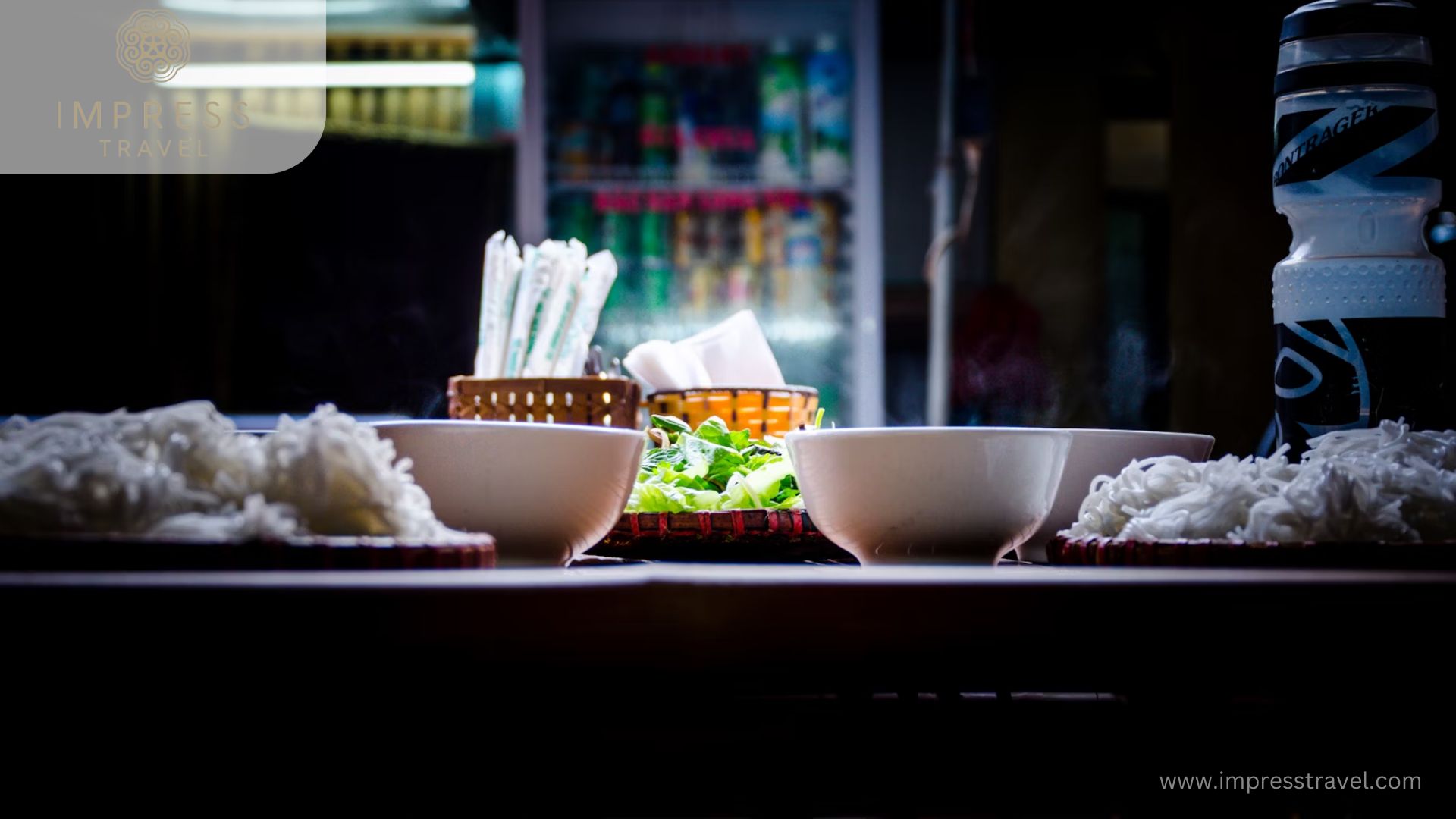
Eating bun cha
Bún chả is typically served in a deconstructed manner, allowing diners to combine the components to their liking:
- In a bowl: Place a serving of vermicelli noodles.
- Add herbs: Top with a generous handful of fresh herbs and lettuce.
- Add pork: Place the grilled pork patties and slices on top.
- Dipping sauce: Serve with a bowl of the dipping sauce on the side. The pork and noodles are often dipped into the sauce as you eat.
- Pickled vegetables: Garnish with pickled vegetables either mixed into the dipping sauce or served separately.
Where to Eat Bún Chả
While bún chả can be found throughout Vietnam, Hanoi is the best place to experience the authentic version. Here are some notable spots:
- Bún Chả Hương Liên: Famous for being the restaurant where former U.S. President Barack Obama dined with celebrity chef Anthony Bourdain in 2016. Located at 24 Le Van Huu, this spot has gained international fame but remains true to its roots with delicious, traditional bún chả.
- Bún Chả Đắc Kim: Located at 1 Hang Manh Street, this long-standing eatery is renowned for its generous portions and flavorful grilled pork.
- Bún Chả Sinh Từ: A popular chain with several locations in Hanoi, known for its consistent quality and delicious dipping sauce.
- Street vendors: For an authentic local experience, try bún chả from street vendors around the Old Quarter. The bustling atmosphere and the smoky aroma of grilling pork add to the charm.
A Deeper Dive into Bún Chả’s Cultural Significance
Bún chả holds a special place in the hearts of Hanoians. It represents not just a meal but a way of life, reflecting the city’s love for street food and communal dining. The dish is a symbol of Hanoi’s culinary tradition, where simplicity meets sophistication. Each element of bún chả tells a story – from the smoky grilled pork that speaks of open-air cooking methods to the fresh herbs that are a staple of Vietnamese cuisine.
In Hanoi, bún chả is more than just food; it is an experience. Early morning markets bustle with vendors preparing for the day, marinating pork and setting up grills. The aroma of grilling meat fills the air, drawing locals and tourists alike. The communal aspect of dining on small plastic stools, sharing food with friends and strangers, adds to the cultural richness of the experience.
The Economic Impact of Bún Chả
Bún chả not only has cultural significance but also plays an important role in the local economy. Street food vendors and small eateries across Hanoi thrive on the popularity of this dish. It attracts both locals and tourists, providing a steady stream of income for many families. Additionally, the global recognition of bún chả, especially after the famous Obama-Bourdain visit, has boosted culinary tourism in Hanoi, with visitors eager to sample the authentic flavors.
Modern Innovations and Variations
While traditional bún chả remains the most popular, there have been modern variations and innovations to cater to diverse tastes. Some restaurants experiment with different types of meat, such as chicken or beef, and even vegetarian versions using tofu or mushrooms. These variations often retain the core elements of the dish – the vermicelli noodles, fresh herbs, and dipping sauce – while offering new flavors and textures.
Global Recognition and Influence
Bún chả has gained international recognition, becoming a symbol of Vietnamese cuisine worldwide. It has been featured in numerous food documentaries and shows, bringing global attention to the simplicity and richness of Vietnamese street food. The dish has inspired chefs around the world to incorporate its elements into their menus, often with creative twists.
Conclusion
Bún chả is a beloved dish that represents the heart and soul of Hanoi’s street food culture. Its rich history, balanced flavors, and communal eating style make it a must-try for anyone visiting Vietnam. Whether enjoyed at a renowned restaurant or from a humble street vendor, bún chả offers a delicious and authentic taste of Vietnamese cuisine. Its simplicity and depth of flavor continue to capture the hearts of food lovers around the world, making it a true culinary gem.
Don’t forget to regularly follow our Facebook page and Website for more interesting information about traveling to Hanoi and to book Hanoi tours at the best prices.




































